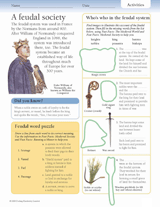

The time is often referred to with terms like the Middle-Ages or Feudal Period (another term that is now contentious amongst medievalists). These dates are under constant scrutiny by historians as there is a degree of overlap in dates, cultural and regional variations and many other factors. Granted, there were aspects of Roman and Greek society and culture that were very unsavoury (Gladiatorial combat and slavery to name a few), but after Rome’s fall and subsequent withdrawal from power, European history is portrayed as taking a ‘wrong turn’.Īfter Petrarch’s disparagement of the ‘dark age’ of literature, other thinkers of the time expanded this term to encompass this perceived dearth of culture in general across Europe between 500 to 1400. Both Roman and Greek civilisations had provided the world with contributions to art, science, philosophy, architecture and political systems.

The classical era was rich with apparent cultural advancement. He called it the ‘Dark Ages’ as he was dismayed at the lack of good literature at that time. He was an Italian scholar of the 14th century. Why is it called the Dark Ages?įrancesco Petrarca (known as Petrarch) was the first person to coin the term ‘Dark Ages’. However, the term doesn’t stand up to much scrutiny – and many medieval historians have dismissed it. It has been called the ‘Dark Ages’ because many suggest that this period saw little scientific and cultural advancement. The timeline falls between the fall of the Roman Empire and the Renaissance. The ‘Dark Ages’ were between the 5th and 14th centuries, lasting 900 years.


 0 kommentar(er)
0 kommentar(er)
